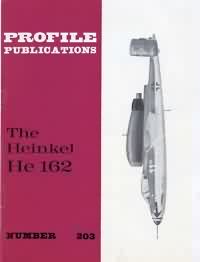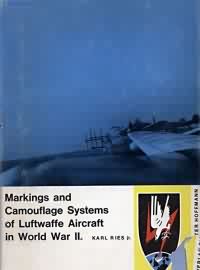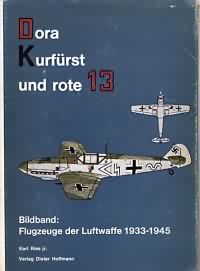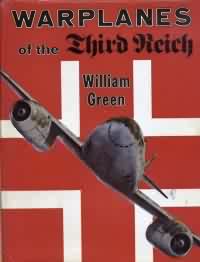A lot of model builders, me included, tend to wax poetic about the good
old days when model kits were fairly basic and it required skills acquired
over many years to produce a scale replica capable of winning in a contest.
Today, of course, many of us don't bother to create those unbelievable
superdetails from scratch. You shake a Tamiya or Hasegawa box, add a selection
of resin or photoetched aftermarket parts, mix well and you have a potential
contest winner.
However, there are times when the good old days were the bad old days,
no matter how you slice it. Reference material, for instance. If you think
I want to go back to the "good old days" of reference publications,
think again. To those of you old enough to remember what modelers' references
were available in the 1960s and 1970s, would you want to go back to those
days? The rest of you? Read on to find out just how good you have it today.
In the early 1960s, model builders generally had a very limited resource
selection. If you didn't own it or couldn't afford to buy it, your only
source for reference material was …drum roll please… your local
library. Remember, the Internet didn't exist then; nor did personal computers.
In fact, Xerox machines were just beginning to make their appearance,
confounding some people who found those newfangled gadgets difficult to
use at best and intimidating at worst. Manual typewriters were still commonplace,
though electric versions were making inroads. And the familiar pocket
calculator? Not only did they not exist, but accounting departments were
still relying on a mechanical monstrosity called a comptometer to do their
financial work with. In fact, business colleges were still teaching the
comptometer as late as 1962.
And when you went to the library to ferret out some of the information
you needed, you started with the card catalog. Essentially what we now
know as a search engine, it was exactly what it sounds like. Rows upon
rows of drawers, each drawer filled with hundreds or thousands of cards,
each card containing information on a book, author or subject, along with
a Dewey Decimal (and indexing system) number telling you where in the
library you could find the information. Worked just like a search engine
except for a couple of things. It was slower (there was a limit to how
fast your fingers could flip through the cards). Secondly, it required
an external component to function….your brain. It couldn't think
for you, even in a rudimentary fashion, like a modern search engine can.
No, you had to figure out what to look for and then use the card catalog
yourself in order to find it.
 One
of the primary sources of information on new and upcoming kits was a model
column that appeared monthly in a British magazine by the name of RAF
Flying Review. Its main focus was real aircraft, but the inclusion
of that column made it all the more appealing. One
of the primary sources of information on new and upcoming kits was a model
column that appeared monthly in a British magazine by the name of RAF
Flying Review. Its main focus was real aircraft, but the inclusion
of that column made it all the more appealing.
Probably one of the best known early references that was created specifically
with the modeler in mind was the Aircraft In Profile series. This
was another British production from, appropriately enough, Profile Publications.
Each release focused on a single subject, from the commonplace to the
esoteric. In fact, if it hadn't been for Profiles, there would have been
virtually no information available at all to the modeler on Russian aircraft.
 As
far as that goes, there wasn't a whole lot available on any nation's aircraft
from the standpoint of camouflage and markings. However, that changed
in 1963 when Karl Ries Jr. wrote a two-volume set called Markings and
Camouflage Systems of Luftwaffe Aircraft in World War II. Hardbound
and running to around 110 pages (and high priced at $5.75), Volume 1 was
composed primarily of Squadron emblem drawings and a few pages of simple
(by today's standards) illustrations of German aircraft types in various
camouflage schemes. Volume 2 started providing 3-view drawings, more squadron
emblems, numerous pages of photographs of operational aircraft, as well
as more and better color illustrations. As
far as that goes, there wasn't a whole lot available on any nation's aircraft
from the standpoint of camouflage and markings. However, that changed
in 1963 when Karl Ries Jr. wrote a two-volume set called Markings and
Camouflage Systems of Luftwaffe Aircraft in World War II. Hardbound
and running to around 110 pages (and high priced at $5.75), Volume 1 was
composed primarily of Squadron emblem drawings and a few pages of simple
(by today's standards) illustrations of German aircraft types in various
camouflage schemes. Volume 2 started providing 3-view drawings, more squadron
emblems, numerous pages of photographs of operational aircraft, as well
as more and better color illustrations.
He produced at least four more books along the same line, including
the famous four  volume
set called Dora Kurfurst und rote 13 and a separate volume that
concentrated on nothing but German aircraft rudder markings. All of these
books featured predominantly WWII vintage photos, presumably from German
film archives (what was left of them) and the personal collections of
German pilots, with each photo being properly captioned. The down side
of this was that all the captions were in German, but that didn't keep
modelers who read no German from lining up to buy every volume as soon
as it came out. Believe me, those books were proof positive that 'a picture
is worth a thousand words' is a true statement. volume
set called Dora Kurfurst und rote 13 and a separate volume that
concentrated on nothing but German aircraft rudder markings. All of these
books featured predominantly WWII vintage photos, presumably from German
film archives (what was left of them) and the personal collections of
German pilots, with each photo being properly captioned. The down side
of this was that all the captions were in German, but that didn't keep
modelers who read no German from lining up to buy every volume as soon
as it came out. Believe me, those books were proof positive that 'a picture
is worth a thousand words' is a true statement.
A lot of things started happening in the 1960s from the model reference
standpoint. Aero Publishers released two books by Don Thorpe on Japanese
aircraft camouflage and markings, Harleyford  Publications
produced a series of hardback books on various aircraft subjects (including
Aircraft Markings of the World 1912-1967) and William Green started
to become a household word (at least to model builders) with a series
of small, hardbound aircraft reference books (there were at least 14)
that were published by Doubleday. Then came his blockbuster in 1970. Namely,
Warplanes of the Third Reich. Publications
produced a series of hardback books on various aircraft subjects (including
Aircraft Markings of the World 1912-1967) and William Green started
to become a household word (at least to model builders) with a series
of small, hardbound aircraft reference books (there were at least 14)
that were published by Doubleday. Then came his blockbuster in 1970. Namely,
Warplanes of the Third Reich.
Running to 670 pages in a 9" x 12" format, there was arguably
more information crammed between those hard covers than had ever been
available to the modeler on WWII German aircraft before. Though the photos
were almost all black and white, there was an 8-page section of full color
profile drawings. Virtually every German aircraft manufacturer from Arado
to Siebel was included. And the price for this treasure trove of knowledge?
$25, which was a lot of money in those days. But pricey or not this book
was an absolute must for the serious modeler and we all found a way to
get our hands on one. Warplanes of the Third Reich was THE bible
on German aircraft for model builders for the next several years and it's
still worth having today.
Whether this book actually opened the floodgates for what would come
over the next thirty years or so, I can't say. But if nothing else, it
certainly proved there was a market for aviation reference publications.
I was planning on this being a one-month article, but I'm running out
of time (that nasty deadline again), so I think I'll stop it here and
pick up again next month. See y'all then.
|
|